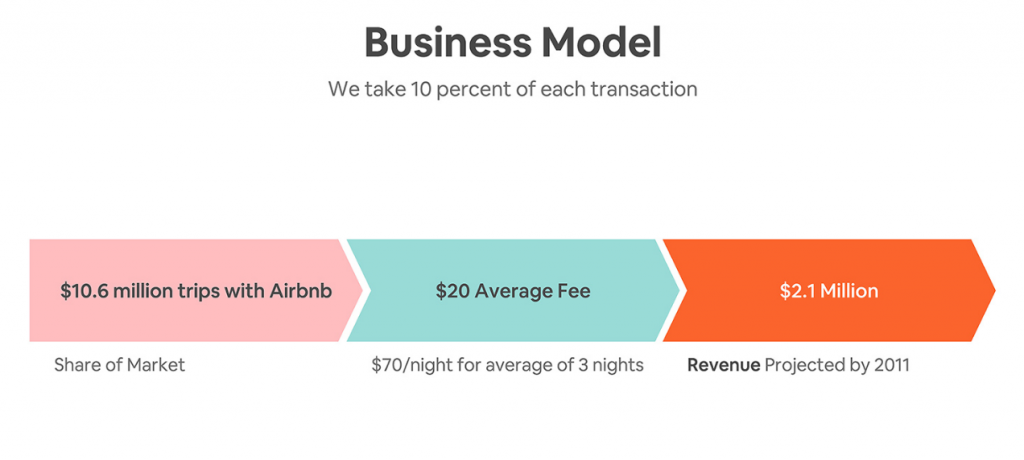Raising Seed or Series A funding – 8 things to nail in your startup pitch to investors
Pitching to investors is probably one of the most stressful parts of being a startup founder entrepreneur. This is true whether you’re raising your first pre-seed, seed stage round or you’re ready for the larger series A funding round or venture capital. Nowadays investors are looking for a lot more than just a clear and present startup pitch. Apart from the executive team and business plan—prospective players want to be assured their investment is sound while the company has real plans for growth.
Before this past year (which we have been living through a pandemic that has made people conduct meetings virtually) VCs and founders alike believed they needed to meet in person to build trust before signing paperwork that would financially and emotionally bond them together for years and years.
Today, the landscape is very different. More institutional capital is flowing into startups at much faster rates and a good deal of credit must go to the virtual pitch meeting. While deals have been historically tied to face-to-face meetings, the industry quickly adapted. By the third quarter of last year, U.S. VC fundraising set new records, and U.S. IPOs raised over $58 billion from 152 companies. At the same time, it became clear that the pace of deal-making, which used to be a long, structured in-person process, had changed. Now, it involves a constant flow of virtual interaction, information and communication. As a result, investors may be able to come to an investment decision in a matter of weeks, not months. David Cheng a Principal at DCM wrote an OP-ED at Crunchbase which he shares his four tips that entrepreneurs should know with fundraising during this virtual socially distanced environment.
As Denise Stephan of Crunchbase writes “for approximately 45 minutes to longer (if it goes well), you put yourself and business out there to be scrutinized from every angle and appraised for monetary value. And those 45 minutes can mean the difference between a successful startup launch and a business idea that never gets off the ground.”
An angel investor Badal Shah told Entrepreneur Mag what crucial characteristics his team is looking for in promising startups when they are considering writing a check to. So here are a few tips to keep in mind.
1 Do your homework and find the Right Investor
Oftentimes with many founders, a pitch starts the moment you shake hands with an investor and begin your 15-slide pitch deck presentation. But the truth is: you can win or lose an investment long before you even walk through the door. The outcome is often decided when you pick an investor to even pitch your company, story and vision to.
But why is that? Well, chemistry. Not every investor is going to be interested in funding your company. You could be the next unicorn, but if your business idea doesn’t resonate with the person or group your pitching to, they won’t write you a check.
So, how do you make sure you’re pitching to the right investor?
The Crunchbase article suggests that before requesting the pitch meeting—before even reaching out at all, please do your due diligence. Do your homework and learn everything you can about a potential investor, including their career to date, their interests, their network, their availability, and their temperament.

(image credit: Founder Institute)
And as you do, forecast. Think about whether or not they’ll resonate with your idea and your business model. Decide whether you’re more likely to click or clash on vision and timeline—and learn what you can about their response to setbacks. Along the way, be honest with yourself about whether or not you want them as a partner.
2 Having a professional Pitch Deck can Help

(image credit: Bueatiful.AI)
The seed stage firm FirstRound Capital designed a four to six week boot camp called Pitch Assist for their startups that are getting ready to raise follow-on capital. At the end of the program, they emerge with a well-designed deck, a strong narrative, and a clear strategy for how to approach the fundraising process. FirstRound says that “unlike normal fundraising advice, Pitch Assist is an immersive program where we advise, build presentations and rehearse side-by-side with First Round founders.” They have helped founders craft a compelling narrative, set the right strategy and build a visual presentation that got the job done. The best way to do this is by creating a 15 to 20 slide pitch deck, detailing:
- The problem you want to solve
- Your proposed solution
- The ins and outs of your product
- Your target audience
- Your business strategy
- Your financials
- Your exit plan
This slide deck software company called Beautiful.AI discusses how this 2009 Airbnb pitch deck presentation landed them $600,000 in seed funding.
The Airbnb pitch deck has become a favorite reference for entrepreneurs around the world. This deck exemplifies simplicity at its finest. Each slide is relatively basic, presenting the information quickly and efficiently.
A well-designed pitch deck template can seal the deal for the growth of your project or startup. It’s important to craft a document worthy of attention to achieve your goals. Like we did for our Airbnb pitch deck redesign, make use of visually compelling graphics like Venn diagrams, a SWOT analysis, images, and more. Using Beautiful.ai, you can add all of these elements with just one click.
3 People plus passion
Active investors have heard hundreds of promises regarding the “next big thing”. What pitches often miss, however, is the “wow factor”. It is essential to highlight actual passion for the project in question.
“I am inspired by people,” Badal Shah told Entrepreneur Mag. “Those that have tested new concepts, pivoted from their first love and created something that the public is willing to make part of their lives.”
Real passion must always radiate from the actual pitch.
4 Have a good thesis and fit
Start up companies and investors play a lot of matchmaking. In many cases, new businesses bypass an investment because the chemistry just wasn’t there. It is important to identify this early on because neither side wants to be micromanaged, or deal with extra stress, in an already high-stress situation.
“It’s always difficult to balance being humble with being direct about why your company is the best and most investable opportunity,” says Badal Shah.
Building relationships, accommodating to the investor’s schedule, and presenting in ways they prefer are important factors that go beyond the actual pitch.
5 Tell your story
The point of a pitch is to inspire and excite, not put people to sleep. But that can be difficult to do when so much of a pitch focuses on numerical data, trends, and forecasting.
That’s why it’s important to periodically step away from the data and focus on the bigger story you’re trying to tell.
Think about your journey. What problems inspired you to create your business in the first place? What successes have you had since then? What setbacks have defined or changed your company? Most importantly: where are you headed now?
Share these things in your pitch and show them off in your pitch deck. Not only will it pique your investor’s interest and keep them engaged during your presentation, but it will also create a logical sequence to the pitch, itself.
6 Be Transparent
When a company asks for a large sum of money, honesty is expected by an investor. As the founders build a relationship with an interested party, it is imperative that they are transparent about all areas of their lives so that the same trust can carry on through the relationship.
“I need to understand the founders philosophies, family life and hobbies,” says Shah “These are important attributes to understand if they can handle the marathon in front of them.”
An investor looks at the big picture, so it is important to share all of the details. Badal Shah says “they can have great concepts, but what is their support structure like?” And “if it is not intact, the investment can be risky.”
7 Nail down the Numbers and Details

Arguably, the most important thing you can do in a pitch meeting is to talk about your business model, your team, your financials, and your future projections. After all, investors don’t just hand out money for big ideas. They want to know that there is a viable plan in place to make money.
So naturally, you should let the data underpin your pitch. It should be openly shared throughout your presentation and visually represented in your pitch deck. It should be referenced during Q&A sessions and discussed in future conversations with the investor.
The more clearly and more frequently you can present this data, the more confident the investor will be in a decision to partner with your business and finance its operations.
8 Share company updates often to build name recognition
It may seem challenging to build meaningful investor relationships when the pace of communication and deal-making is faster. While these tools can help build rapport and address quick questions, email is still an excellent vehicle for written investor updates. David Cheng suggested in his post that “these updates should include wins, what entrepreneurs need help with, company goals and what’s on the horizon. Share these often — I recommend quarterly — so investors can see and track cadence. You can sanitize them for anything sensitive, but they’re useful for staying top of mind.”
Sharing these updates also allows current investors to offer support, and potential investors to familiarize themselves with the company. In either case, investor updates establish name recognition, trajectory, and vision.
Conclusion
Remember that founders are always in capital raise mode. It may not necessarily be in a formal presentation, but you are constantly being evaluated as you share your ideas with new contacts. The company and your coworkers rely on you for the well-being of this venture. The greatest time to raise capital is when the company does not need it. Another point is to be specific for the capital raise on what you will spend the money on. If you have ever watched an episode of Shark Tank on CNBC, you often hear Mark Cuban ask “what do you need the money for?
Not only do investors want to know exactly what their investment will look like, but they also want to see that you’ve thought through your financial needs. At the same time, it’s important to show them where you anticipate to be after spending their money—as this builds trust. Now with will not guarantee funding, it will ease concerns and instill greater confidence in your business model and strategy—which can lead to greater fundraising success. Now it is especially important if you are going to raise a Series A round, you should be thinking about preparing due diligence materials which include financial documents such as P&L statements, business plans, financial cash flow forecasts, tax computations, proof of tax compliance, your cap table and more.
Of course, we suggest working with an experienced startup-focused accounting firm, like Huckabee CPA, well before your startup is in the due diligence phase of an important fund raising or m&A transaction.







